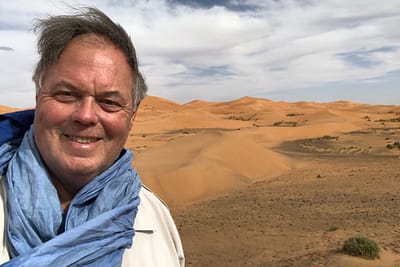TANZANIA 2010: The Serengeti Unfolds
Mar 27, 2010 | by Adrian Binns
As we descend from the Highlands our view is tremendous. The Lemakarot Crater towers to our east, Oldupai Gorge is ahead of us and beyond that, the endless plains of the Serengeti National Park. Once we have reached the short grass plains that dominate this side of the Serengeti, we encounter our first taste of the largest migratory herd of animals left on earth. Herds of Wildebeest stream forth from the distant horizon in single file and follow ancient well-worn tracks northwards while others are spread out over the plains. Everywhere one looks there are Wildebeest.
Vultures descend from the skies attracted to a dying wildebeest calf. African White-backed (2nd from right), Ruppell’s (right) wait patiently for the larger Lappet-faced Vultures (left) to break open the carcass. It is a gruesome sight, but this is life on the plains.
As we neared Naabi Hill, the entranceway to the Serengeti NP, small flocks of Yellow-throated Sandgrouse could be seen alighting on the short grass. We were voyeurs as Spotted Hyenas mated besides the road and move rather quickly past the a rogue Elephant.
There was a chance to stretch our legs at Naabi Hill as Jonas had to take care of the paperwork. From our vantage point we could see the leading edge of the migration with thousands of Zebra spread across the plains. The acacias held Yellow-vented Eremomela and Brubru which interested a Gabar Goshawk and a Brown Snake-Eagle (above) glided over the hill. This turned into a little longer stop as the keys were locked in the vehicle! We were amazed at the sight of a safari land rover that was obviously well out of alignment, having been squashed and leaning to the left. No doubt it rolled over and hopefully no one was hurt.
It isn’t until we are through Naabi Hill that the tall grass plains dominate the landscape, interspersed with rocky outcroppings known as kopjes. Capped Wheatears and a pair Spotted Thick-knee perched on the raised roadside ridges. In sparsely vegetated areas Ruppell’s Starling and Fischer’s Lovebirds were seen.
Along the Seronera riparian area our first Leopard of the trip was seen asleep on the end of a Yellow-bark Acacia limb (about half way up the tree on the left side).
As the sun got lower in the horizon and the day was coming to an end, the Leopard (above) stretched and yawned a few times before raising its head to see a number of us admiring her. Dangling from the lowest fork on the trunk was the carcass of a female Bohor Reedbuck, open at the belly. From where we were positioned we could see a pair of small feet under the females body. While we may never know whether the Leopard had killed the mother or the calf first, she definitely placed the calf in the tree first, and the mother on top.





































